
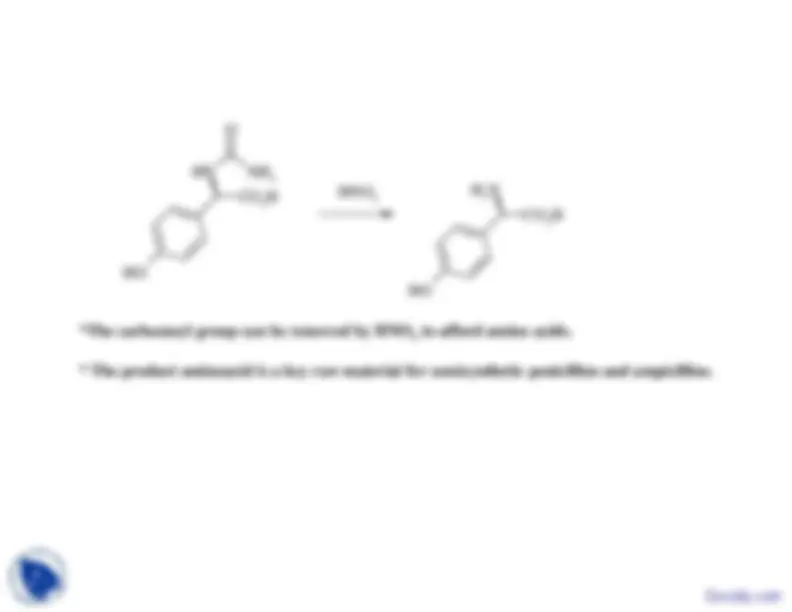
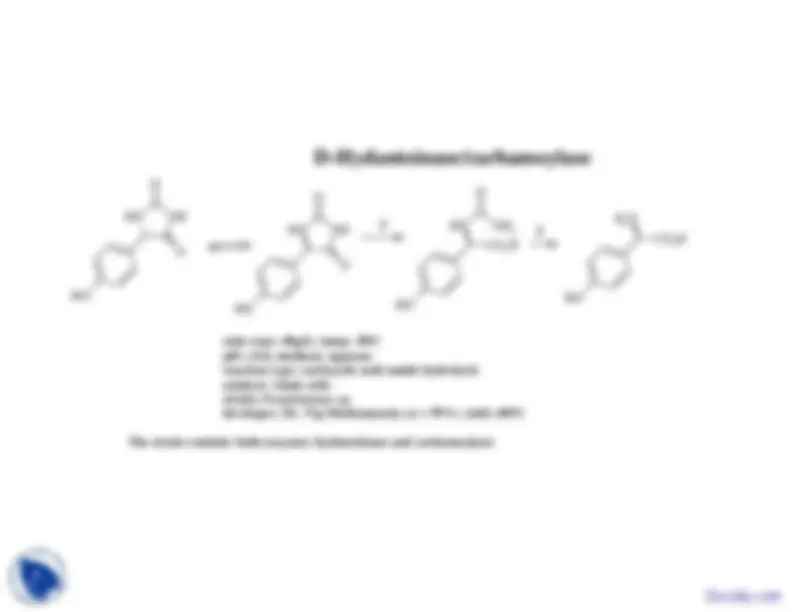
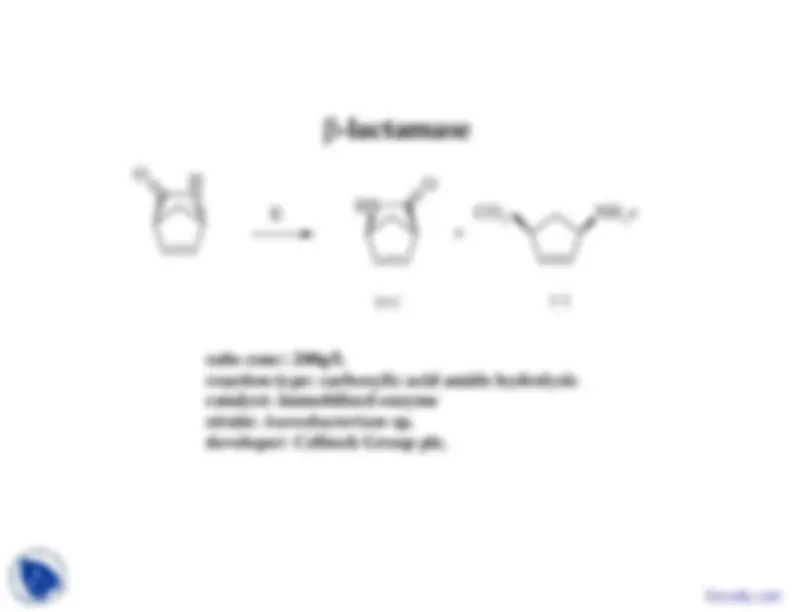
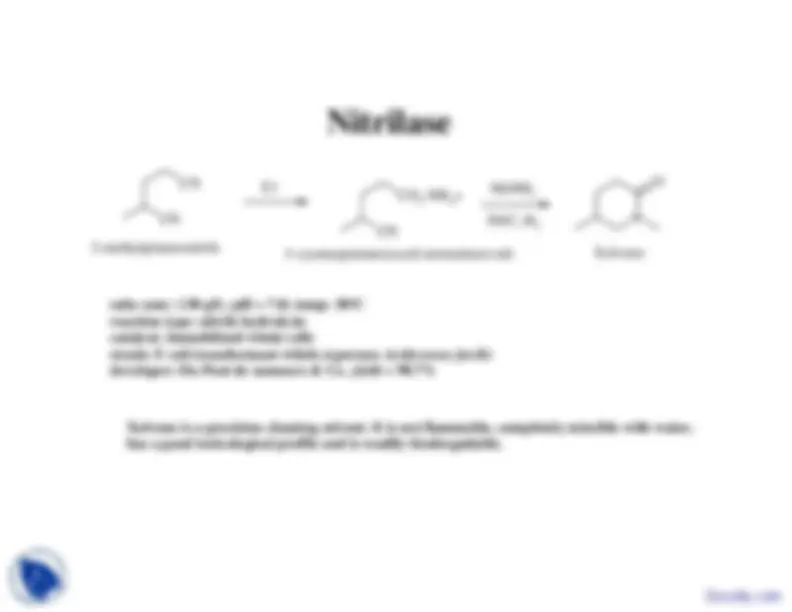
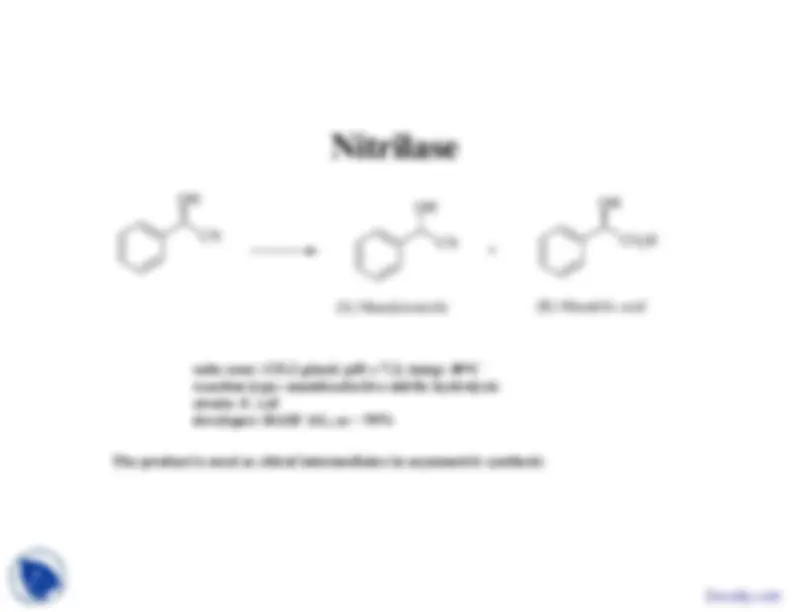
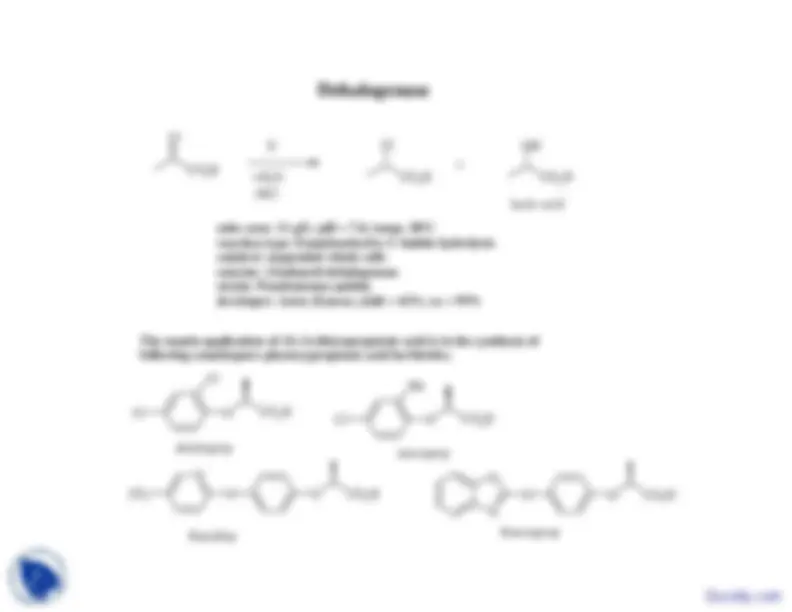


Study with the several resources on Docsity

Earn points by helping other students or get them with a premium plan


Prepare for your exams
Study with the several resources on Docsity

Earn points to download
Earn points by helping other students or get them with a premium plan
Community
Ask the community for help and clear up your study doubts
Discover the best universities in your country according to Docsity users
Free resources
Download our free guides on studying techniques, anxiety management strategies, and thesis advice from Docsity tutors
Various white biotechnology processes focused on the production of chiral compounds using enzymatic reactions. Topics include d-hydantoinase, β-lactamase, nitrilase, and dehalogenase, as well as their applications in the synthesis of semisynthetic antibiotics, hiv inhibitors, and chiral intermediates. Reactions are catalyzed by immobilized whole cells, suspended whole cells, and enzymes, with different substrate concentrations, temperatures, and ph levels.
Typology: Slides
1 / 11

This page cannot be seen from the preview
Don't miss anything!







2
2
pH = 8.0, medium: aqueousreaction type: carboxylic acid amide hydrolysiscatalyst: immobilized whole cellsstrain:
Bacillus brevis
developer: Kanegafuchi; ee = 99%; yield = 99%
*** The unreacted L-hydantoins are readily racemized under the reaction condition* Quantitaive conversion is achieved because of the in situ racemization**
O
O
D-Hydantoinase/carbamoylase
NH
N H
O
NH
N H
O
O
NH
2
N H
O
CO
2 H
N H
2
CO
H 2
E
E
O H
O
O H
O H
O H
subs conc: 40g/L; temp: 38
oC
subs conc: 40g/L; temp: 38 CpH = 8.0, medium: aqueousreaction type: carboxylic acid amide hydrolysiscatalyst: whole cellsstrain:
Pseudomonas sp.
developer: Dr. Vig Medicaments; ee = 99%; yield =80%
The strain contains both enzymes (hydantoinase and carbamoylase)
HN
O
O
β
-lactamase
N
N H
O
CO
2
NH
3
E
(+)
(-)
subs conc: 200g/Lreaction type: carboxylic acid amide hydrolysiscatalyst: immobilized enzymestrain:
Aureobacterium
sp
strain:
Aureobacterium
sp.
developer: Celltech Group plc.
Lactamase/Racemase
N H
O
NH
2
N H
O
NH
2
NH
E
N H
2
N H
2
N
H
2
NH
2 CO
2 H
E
E
Subs conc: 100g/L; pH = 8.0-9.0; temp: 40
o C
reaction type: Carboxylic acid amide hydrolysis/racemizationreaction type: Carboxylic acid amide hydrolysis/racemizationcatalyst: suspended whole cellsenzyme: E1 = L-lysisne-1,6-lactame hydrolase
E2 = caprolactam racemase
strain:
Cryptococcus laurentii/ Achromobacter obae
i^
99%
developer: Toray Industries Inc. ee = 99%
*** The lactamase and racemase are active at same pH.* The products is used as nutrient and food suppliment**
The products is used as nutrient and food suppliment
Nit il
MeNH
Nit
rilase
2
4
2-methylglutaronitrile
4-cyanaopentanoicacid ammonium salt
MeNH
2
Pd/C, H
2
Xolvone
subs conc: 130 g/L; pH = 7.0; temp: 30
o
reaction type: nitrile hydrolysiscatalyst: immobilized whole cells
y
strain: E coli transformant which expresses
Acidovorax facilis
developer: Du Pont de nemours & Co. yield = 98.7%
Xolvone is a precision cleaning solvent. It is not flammable, completely miscible with water,has a good toxicological profile and is readily biodregadable.
Dehalogenase
Cl
CO
H 2
Cl
CO
H 2
OH
CO
2 H
E
+H
O 2
HCl
-HCl
lactic acid
subs conc: 11 g/L; pH = 7.4; temp: 30
o C
reaction type: Enantioselective C-halide hydrolysiscatalyst: suspended whole cells
2 h l
id d h l
enzyme: 2-haloacid dehalogenasestrain: Pseudomonas putidadeveloper: Astra Zeneca; yield = 42%; ee = 99%
The manin application of (S)-2-chloropropionic acid is in the synthesis of Cl
Cl
O
CO
H 2
Cl
Me
O
CO H
The
manin application of (S) 2 chloropropionic acid is in the synthesis of
following enantiopure phenoxypropionic acid herbicides.
Cl
O
C
O
H 2
N
CF
3
O
O
CO
2 H
O
O
O
CO
H 2
dichloprop
mecoprop
3
2
N
O
O
CO
2
fluazifop
fenoxaprop
Dehalogenase/ application
Cl
CO
H 2
Br
CO
2 H
OH
CO H
2
CO
2 H
CO
H 2
(S)-2-chloropropionic acid
(S)-2-bromopropionic acid
(S)-lactic acid
Br
CO
2 H
Br
OH
CO
2 H
Br
(S) 2 3 dibromopropionic acid
(S) 3 b
2 h d
i^
i^
id
Br
OH
(S)
-2,3-dibromopropionic acid
(S)-3-bromo-2-hydroxy-propionic acid
CO
2 H
CO
2 H
(S)-2-bromo-butyric acid
(S)-2-hydroxy-butyric acid
The above chiral products are synthesized by the deghalogenase strategy